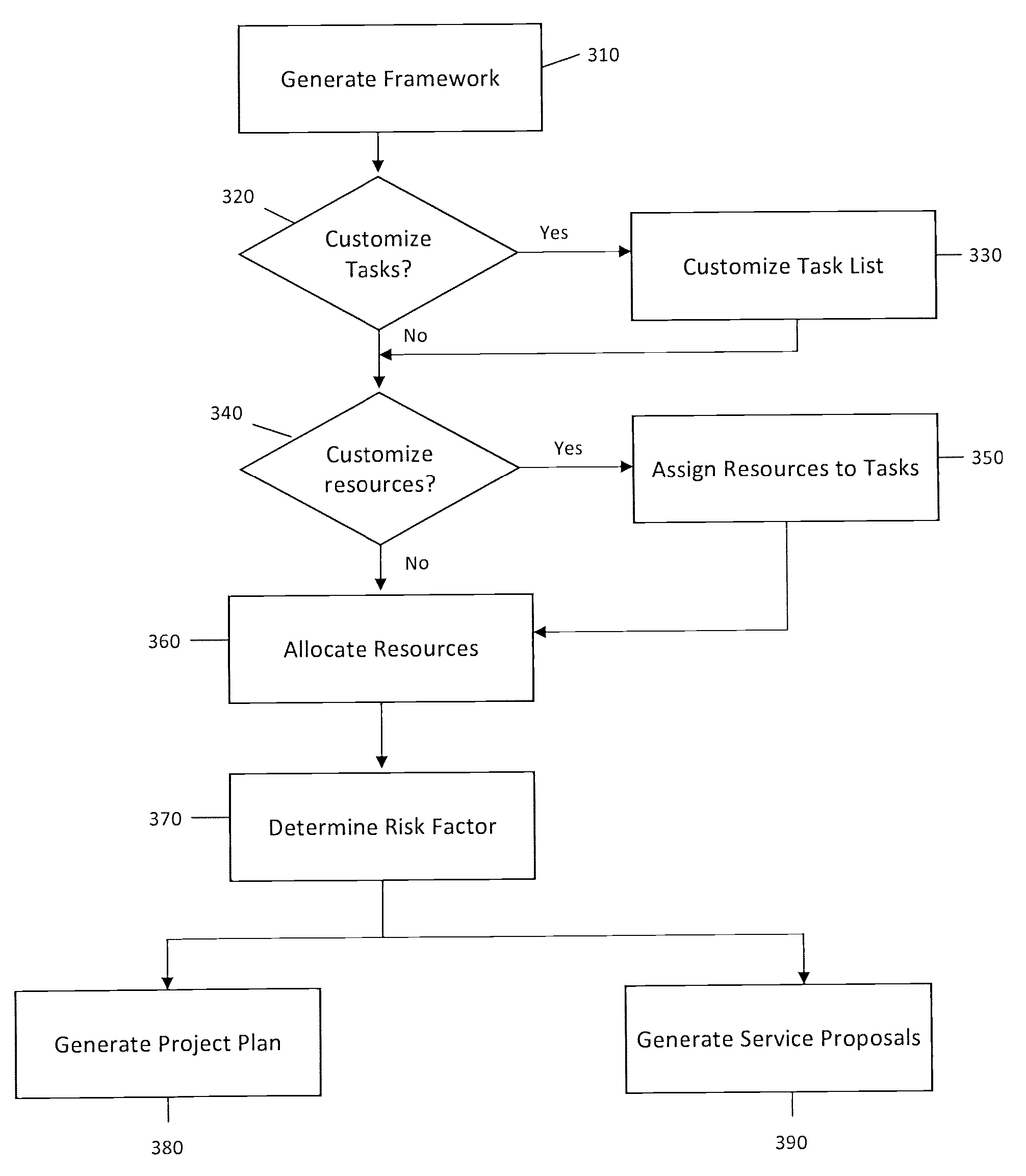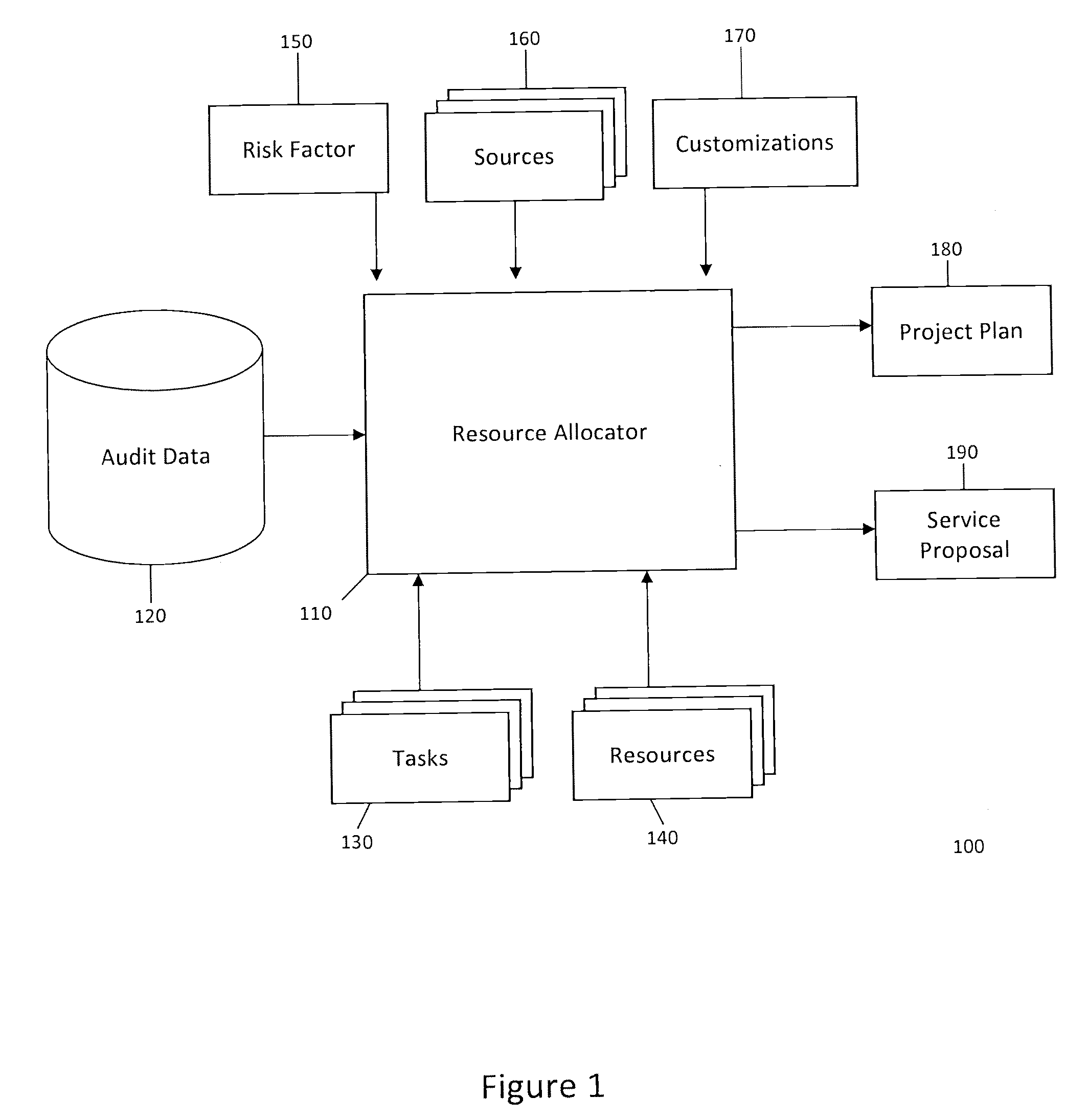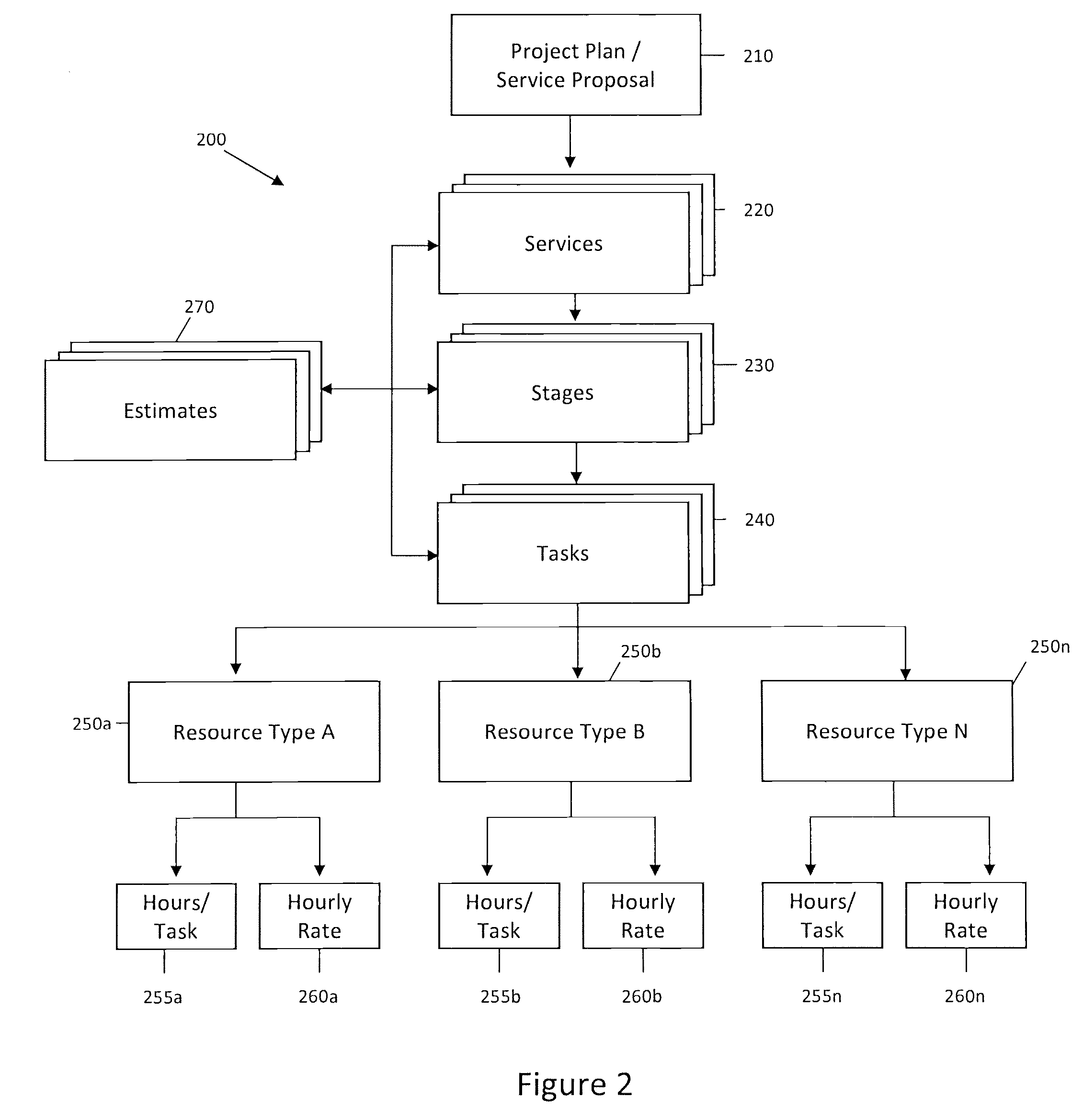System and Method for Dynamically Allocating Human Resources to a Project Plan
a technology of dynamic allocation and project plan, applied in the field of system and method for dynamic allocation of human resources to a project plan, can solve the problems of insufficiently identifying or otherwise addressing various skill levels or qualifications, project plans developed using existing systems may fail to accurately depict work efforts, cost estimates, scheduling timelines, etc., and achieves the effect of minimizing risks, accurate assessment, and improving confidence in estimates or proposals
- Summary
- Abstract
- Description
- Claims
- Application Information
AI Technical Summary
Benefits of technology
Problems solved by technology
Method used
Image
Examples
Embodiment Construction
[0016]Referring to FIG. 1, an exemplary system 100 for dynamically allocating human resources to a project plan is illustrated according to various aspects of the invention. System 100 may include a resource allocator 110, which may receive data from various sources. For example, the data sources may include audit data stored in a data repository 120 or other suitable storage medium, which may provide data relating to one or more tasks 130, one or more human resources 140, one or more sources 160 (e.g., agents or other data sources), in addition to a user-specified risk factor 150 or other customizations 170. Subsequently, resource allocator 110 may centralize, normalize, standardize, or otherwise analyze the received data (e.g., by data mining or performing other suitable operations on the received data) in order to generate a project plan 180, a service proposal 190, or any other suitable output that may include or apply estimates of human resource usage.
[0017]System 100 may analy...
PUM
 Login to View More
Login to View More Abstract
Description
Claims
Application Information
 Login to View More
Login to View More - R&D
- Intellectual Property
- Life Sciences
- Materials
- Tech Scout
- Unparalleled Data Quality
- Higher Quality Content
- 60% Fewer Hallucinations
Browse by: Latest US Patents, China's latest patents, Technical Efficacy Thesaurus, Application Domain, Technology Topic, Popular Technical Reports.
© 2025 PatSnap. All rights reserved.Legal|Privacy policy|Modern Slavery Act Transparency Statement|Sitemap|About US| Contact US: help@patsnap.com



